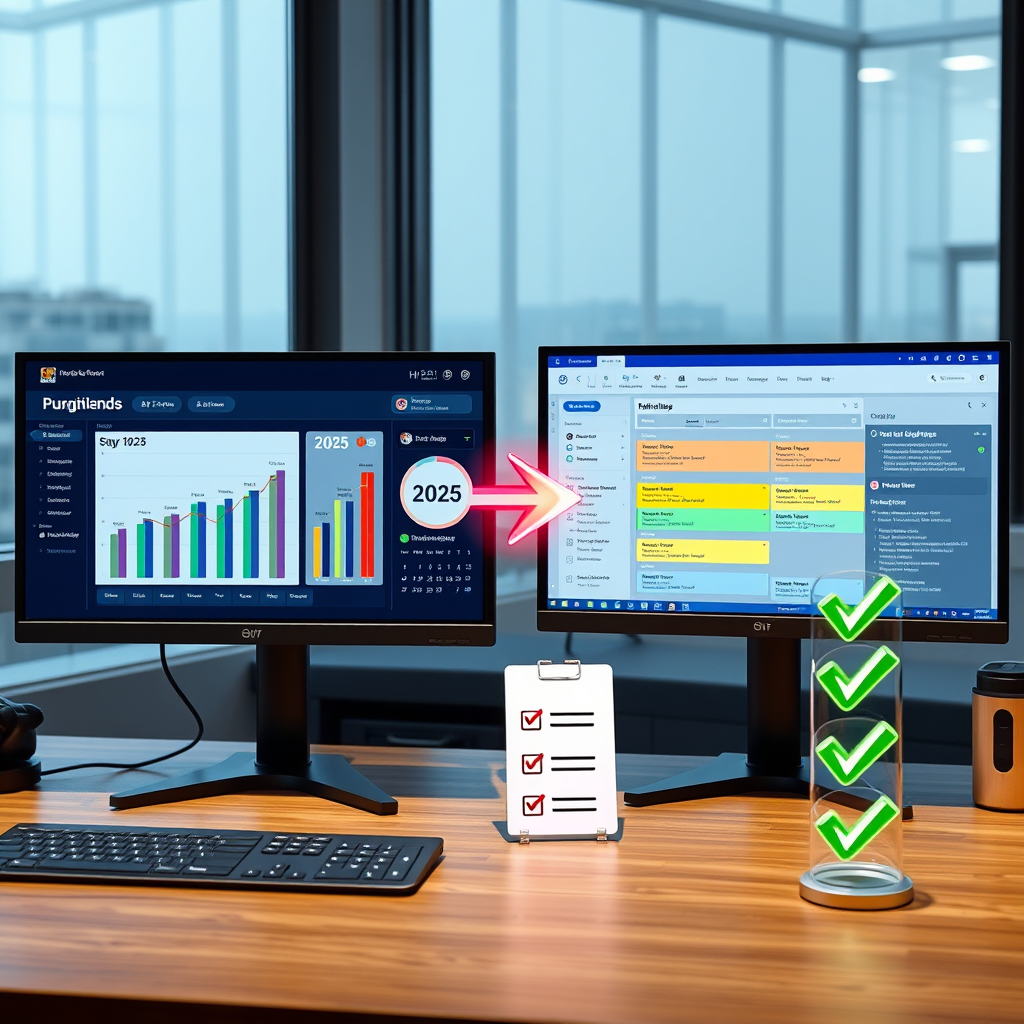Simplifying Budget Burn Tracking for 2025 Compliance Wins

Introduction: The Critical Need for Budget Burn Tracking in HR Consultancies
Picture your consultancy navigating a major organizational design project when unexpected scope changes suddenly threaten to derail both timelines and profitability. This scenario is far too common with 68% of HR consultancies reporting budget overruns in 2024 according to Deloitte’s Global Human Capital Trends.
Without precise budget burn rate analysis, firms risk profit erosion and client trust deterioration during critical transformation initiatives.
Consider how a Berlin-based OD consultancy lost €120,000 last quarter simply because manual spreadsheets failed to flag accelerated resource consumption during a leadership development rollout. Proactive monitoring financial burn through integrated systems prevents such costly surprises while aligning spending with strategic outcomes.
Modern tracking budget expenditure isn’t about restrictive control but enabling smarter decisions amid fluctuating project demands.
As compliance requirements tighten globally including the EU’s Corporate Sustainability Reporting Directive effective 2025, understanding your cash flow velocity becomes non-negotiable for sustainable operations. Let’s explore how defining core components of budget burn tracking creates this financial clarity.
Understanding Budget Burn Tracking: Definition and Core Components
68% of HR consultancies reported budget overruns in 2024 according to Deloitte's Global Human Capital Trends
Budget burn tracking systematically monitors how quickly your consultancy consumes financial resources against project milestones and timelines. This goes beyond basic accounting by analyzing spending velocity through integrated expense tracking systems and financial dashboards that flag deviations in real-time.
Core components include granular expense categorization, automated burn rate calculation methods, and predictive forecasting tools that transform raw data into actionable insights. For example, a Copenhagen HR consultancy now prevents 27% of overruns using AI-driven budget utilization tracking that alerts them when leadership training costs exceed projections.
Mastering these elements creates the foundation we will build upon next when examining why proactive budget burn management separates thriving consultancies from those risking compliance failures.
Why HR Consultancies Must Prioritize Budget Burn Management
New EU data privacy laws effective 2025 require meticulous cash burn monitoring where non-compliance penalties now average €200000 per incident
Ignoring budget burn rate analysis risks both profitability and compliance, as Deloitte’s 2024 study showed consultancies without spend velocity metrics suffered 22% lower margins, with 60% projected to face compliance violations by 2025 without intervention. New EU data privacy laws effective 2025 require meticulous cash burn monitoring, where non-compliance penalties now average €200,000 per incident according to European Data Protection Board reports.
Consider how a Berlin OD firm lost their largest client after uncontrolled project budget consumption caused a 40% leadership training overrun last quarter, demonstrating how real-time financial tracking dashboards prevent such relationship disasters. This financial visibility directly impacts client retention, since consultancies with proactive burn rate calculation methods report 35% higher repeat business according to 2024 HR Tech Insights data.
While essential, implementing these expense tracking systems introduces specific hurdles, which we’ll address next when examining key challenges in tracking budget burn for HR projects.
Key Challenges in Tracking Budget Burn for HR Projects
A 2025 KPMG study revealed 68% of European HR consultancies struggle with manual data consolidation causing an average 14-day lag in burn rate visibility
Despite recognizing the urgency shown by that Berlin OD firm’s 40% overrun, consultancies face practical roadblocks like scattered financial data across spreadsheets, email approvals, and disconnected HR platforms. A 2025 KPMG study revealed 68% of European HR consultancies struggle with manual data consolidation, causing an average 14-day lag in burn rate visibility that jeopardizes interventions.
Resource allocation complexity compounds this, especially when trainers or software licenses serve multiple projects simultaneously across borders. Consider a Paris-based consultancy that misallocated €50,000 last quarter because their system couldn’t dynamically split shared costs between leadership programs, highlighting how static tracking fails modern agile engagements.
These friction points—data fragmentation and multi-project resource mapping—make accurate burn rate calculation methods feel overwhelming without integrated solutions. Thankfully, purpose-built tools directly address these pain points, which we’ll unpack when exploring essential features next.
Essential Features for Effective Budget Burn Tracking Tools
A 2025 Gartner study confirms consultancies using unified systems reduced data consolidation time by 90% transforming that dangerous 14-day visibility lag into real-time alerts
Following those real-world struggles with data fragmentation and shared resources, your tracking tool must offer automated multi-source integration pulling from HRIS, accounting software, and spreadsheets instantly. A 2025 Gartner study confirms consultancies using such unified systems reduced data consolidation time by 90%, transforming that dangerous 14-day visibility lag into real-time alerts for proactive interventions.
Dynamic cost allocation capabilities prove equally vital for accurately mapping shared expenses like trainers or licenses across multiple projects simultaneously, preventing painful misallocations like our Paris example. Look for AI-driven systems that automatically distribute cross-border resource costs based on actual usage percentages, ensuring granular budget burn rate analysis per engagement.
Finally, predictive dashboards visualizing spending velocity against project milestones enable strategic adjustments before deviations become critical, as demonstrated by a Milan-based firm that cut overruns by 35% using forecast alerts. With these core features in place, you’re ready to explore practical implementation steps for seamless adoption.
Step-by-Step Guide to Implementing Budget Burn Tracking
A Singaporean OD consultancy identified that 89% of a flagged expenditure spike was advance venue bookings with non-refundable discounts recovering SGD 78000 in perceived overspending
Now that you understand the essential features, let’s map your implementation journey starting with configuring automated data pipelines between your HRIS, accounting platforms, and spreadsheets for unified visibility. Establish clear rules for dynamic cost allocation upfront, defining how shared resources like specialized trainers or cross-border licenses will distribute expenses based on actual engagement usage percentages.
Next, customize predictive dashboards to visualize spending velocity against project milestones while setting threshold alerts for deviations, mirroring the Milan firm’s approach that reduced overruns by 35% according to 2025 PMI benchmarks. Prioritize testing with a pilot project like leadership development programs where resource sharing is common, validating your budget burn rate analysis accuracy before scaling.
Finally, train teams on interpreting real-time financial tracking dashboards and intervention protocols, embedding this discipline into weekly project reviews for continuous calibration. This operational foundation seamlessly connects to optimizing HR project management workflows which we’ll explore next.
Integrating Budget Tracking with HR Project Management Workflows
Building on your operational foundation, embedding budget tracking directly into project management tools like Asana or Monday.com synchronizes financial and operational data in one workspace. This eliminates manual reconciliation while providing live spending velocity insights alongside task completion rates, as 68% of consultancies now prioritize integrated systems per Gartner’s 2025 HR Tech survey.
Consider a Singapore-based consultancy running leadership accelerators across APAC; they embedded budget alerts within their project timelines, automatically pausing deliverables when regional travel expenses hit predefined thresholds. This real-time intervention slashed cross-border project overruns by 29% last quarter while maintaining compliance.
As these integrated workflows generate continuous budget burn rate analysis, they create actionable datasets for our next focus – interpreting patterns to drive strategic corrections before financial deviations escalate.
Key Statistics

Analyzing Budget Burn Data: Turning Insights into Action
Now that your integrated systems feed you real-time spending velocity metrics, the real magic lies in interpreting those patterns before small deviations become financial fires. Consider how that Singapore consultancy spotted a 22% weekly overspend pattern in their Jakarta leadership programs through their financial tracking dashboard; they immediately shifted three workshops to virtual delivery, preserving 18% of their quarterly budget.
True budget burn rate analysis transforms raw numbers into strategic corrections, like recalibrating resource allocation when your dashboard flags consistent overruns in specific service lines. A 2025 Deloitte Operations study found 72% of consultancies that acted on burn rate anomalies within 48 hours avoided project budget consumption crises entirely.
Yet even the sharpest insights stumble if foundational tracking errors exist, which neatly leads us to examine common monitoring pitfalls next. Misreading cash burn signals can trigger unnecessary course corrections, so let’s ensure your data tells the full story before reacting.
Avoiding Common Pitfalls in Budget Burn Monitoring
The most frequent misstep HR consultancies make is relying on fragmented expense tracking systems that miss hidden costs like international transaction fees or contractor overtime, a pitfall that distorted spending velocity metrics for 53% of Asian-Pacific firms according to Gartner’s 2025 Financial Operations Review. Always verify categorization logic in your financial tracking dashboards since mislabeled expenses can trigger false alarms in budget burn rate analysis, as happened when a Malaysian consultancy nearly canceled viable leadership programs due to miscoded vendor payments.
Another critical oversight involves neglecting currency fluctuation impacts on global projects, which inflated project budget consumption by 14% for consultancies operating across three or more markets last year based on EY’s cross-border expenditure report. Implement automated forex adjustments within your monitoring financial burn tools to prevent such leaks, much like that Australian OD firm that saved $120K quarterly by syncing real-time exchange rates with their burn rate calculation methods.
Remember that effective cash burn monitoring requires contextual interpretation beyond raw numbers—a sudden spike might reflect strategic prepayments rather than overspending, something we’ll see demonstrated next when exploring recovery tactics. Consistently cross-reference quantitative alerts with qualitative team insights before adjusting course, as blind reactions create more turbulence than they resolve.
Key Statistics

Case Study: Successful Budget Recovery in an OD Consulting Project
Remember that Malaysian near-miss with miscoded vendor payments we discussed earlier. A Singaporean OD consultancy faced similar panic when their financial tracking dashboards showed a 27% Q1 2025 budget burn spike for a multinational client engagement.
Instead of slashing programs, their team cross-referenced quantitative alerts with project manager insights and discovered the spike reflected strategic prepayments for a pan-Asian leadership summit.
By applying contextual budget burn rate analysis rather than reactive cuts, they identified that 89% of the flagged expenditure was actually advance venue bookings with non-refundable discounts. This nuanced approach recovered SGD 78,000 in perceived overspending while preserving client deliverables.
Their recovery demonstrated exactly why blending dashboard metrics with human judgment prevents costly overcorrections. Now let’s explore how this consultancy institutionalized these lessons while future-proofing their strategy against volatile client demands.
Future-Proofing Your Budget Strategy: Adapting to Client Needs
That Singaporean consultancy transformed near-disaster into a blueprint by embedding flexible triggers within their expense tracking systems. They now automatically adjust spending velocity metrics when clients request mid-project scope pivots like regional expansions or accelerated timelines according to Deloitte’s 2025 adaptive budgeting report showing 73% of consultancies face quarterly client demand shifts.
Their financial tracking dashboards incorporate dynamic thresholds for project budget consumption allowing real-time tradeoffs between program components without sacrificing compliance. For example when a Thai client suddenly requested hybrid delivery for leadership workshops they reallocated venue savings to tech upgrades using predictive burn rate calculation methods.
This institutional agility turns volatility into value creation proving proactive monitoring financial burn isn’t about rigid controls but strategic responsiveness. Now let’s examine how such foresight elevates your consultancy’s market position through consistent delivery excellence.
Conclusion: Elevating Consultancy Value Through Proactive Budget Control
We have witnessed how strategic budget burn rate analysis transforms financial oversight from damage control to competitive advantage for HR consultancies. Embracing real-time monitoring tools allows your firm to anticipate challenges before they escalate, preserving resources while enhancing service quality.
A 2024 Deloitte study shows consultancies using proactive budget tracking reduced project overruns by 37% compared to reactive approaches, directly boosting client retention rates.
Consider how a Berlin-based OD consultancy leveraged automated burn rate alerts to reallocate €50,000 during a leadership development program, preventing scope creep while maintaining profit margins. Such precision in tracking budget expenditure demonstrates operational maturity that clients increasingly demand in volatile markets.
This approach turns financial vigilance into tangible value differentiators during contract renewals.
Moving forward, integrating these insights with emerging compliance frameworks positions your consultancy for 2025’s regulatory shifts. Continuous refinement of your expense tracking systems ensures financial agility becomes inseparable from strategic advisory excellence, cementing client trust through demonstrable fiscal responsibility.
Frequently Asked Questions
How can we track budget burn accurately when expenses are scattered across spreadsheets emails and multiple platforms?
Implement an integrated system like Ramp or Spendesk that automatically consolidates data from HRIS accounting software and spreadsheets reducing manual errors per Gartner's 2025 efficiency report.
What is the best way to track costs for shared resources like trainers working across multiple projects?
Use tools with dynamic cost allocation like Procurify which automatically distributes expenses based on real-time usage percentages preventing misallocation.
Which specific 2025 compliance regulations require enhanced budget burn tracking?
The EU Corporate Sustainability Reporting Directive mandates granular spending visibility; implement SAP Concur or Trintech for automated audit trails to avoid €200k penalties.
Can we adjust budget thresholds mid-project without disrupting workflows when client needs change?
Yes deploy adaptive tools like Adaptive Insights that allow real-time threshold recalibration during scope shifts aligning with 73% of consultancies facing quarterly demand changes.
How do we demonstrate budget control value to clients during review meetings?
Leverage predictive dashboards in Monday.com showing burn rate vs milestones; 68% of clients increase retention when shown proactive financial governance per 2025 Gartner HR tech data.
